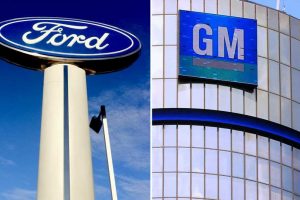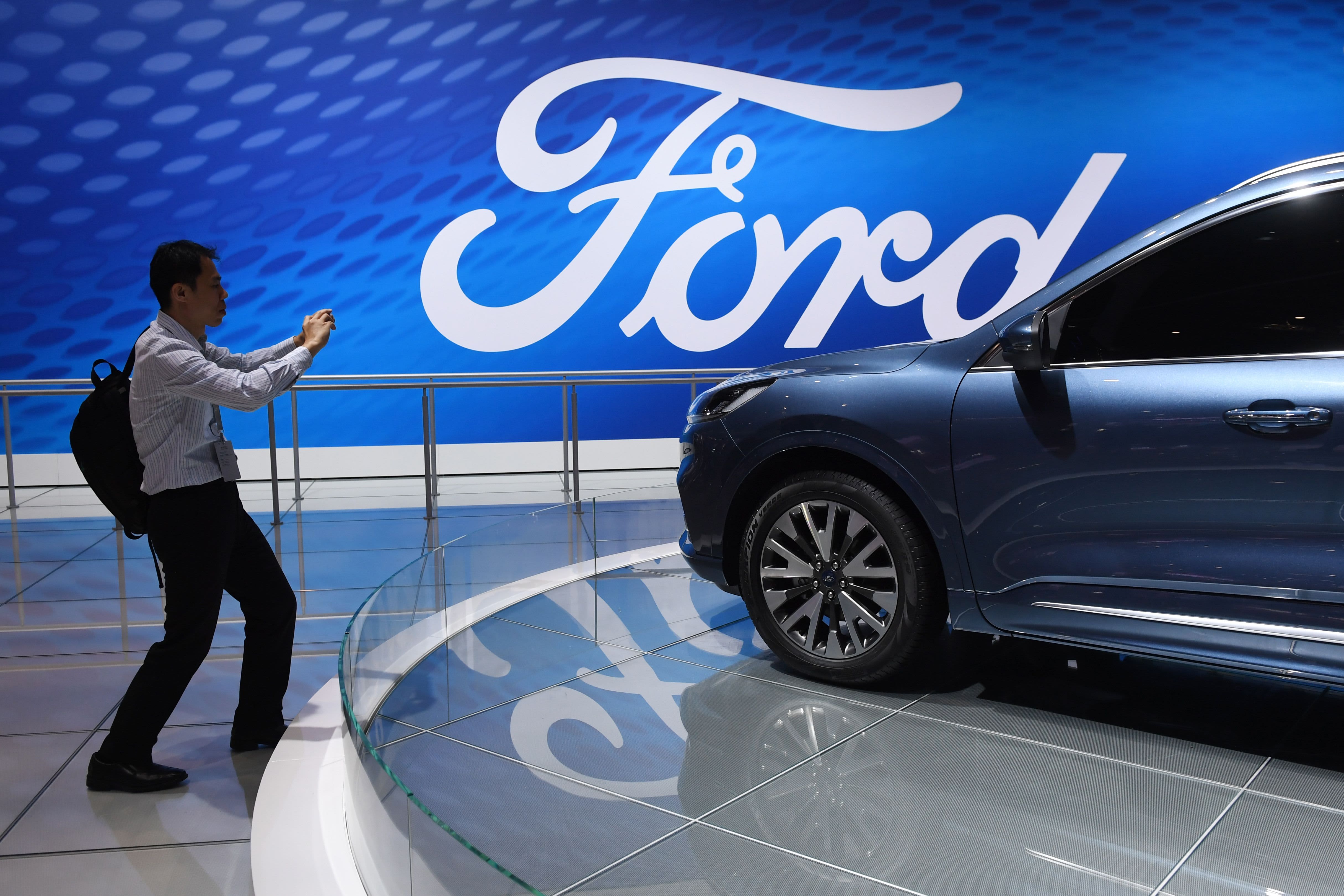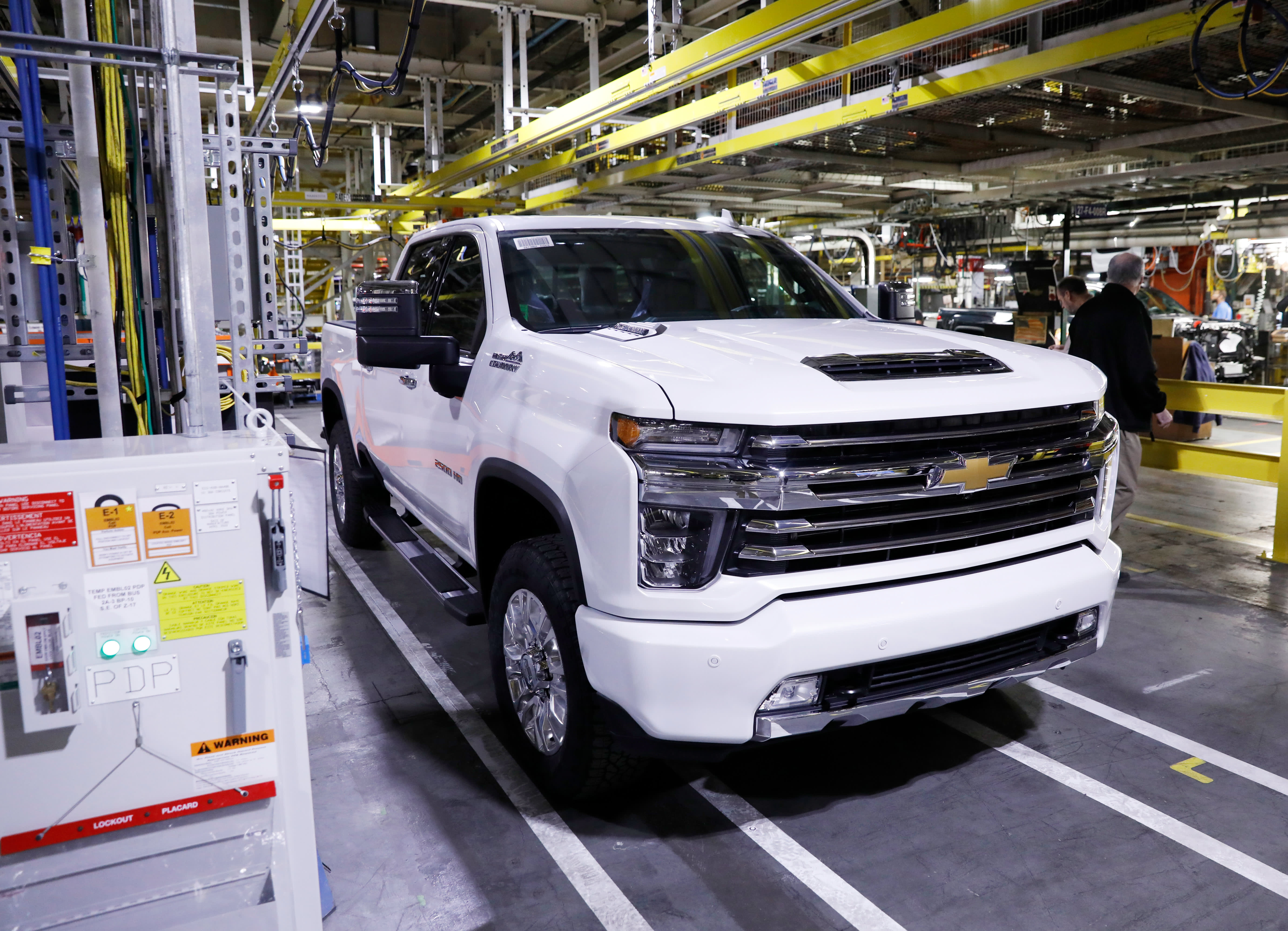Why Ford's stock is surging while shares of GM are flat after Q3 earnings beats

- Both General Motors and Ford Motor beat Wall Street's expectations for the third quarter but you wouldn't know it by their stock prices.
- Shares of GM during trading Thursday are relatively flat, while Ford's stock surged to a new 52-week high.
- The differences between the third-quarter earnings reports ranged from outlooks to their autonomous vehicle businesses and stock dividends.
In this article
- GM
- F
DETROIT – Both Ford Motor and General Motors beat Wall Street's expectations for the third quarter but shares of GM are flat as Ford's stock surged to a new 52-week high during trading Thursday morning.
On the surface, results for both automakers were similar. They easily beat the earnings consensus from analysts and slightly topped revenue expectations. They also both partially raised 2021 guidance. But looking deeper into the results and comments from executives, Ford made better progress and painted a more optimistic outlook than GM, according to analysts.
The results pushed Ford's shares up by as much as 13% to $17.58 a share during trading Thursday. That compares with GM's stock up by as much as 2.4% to $55.58 a share. GM's market cap is about $80 billion compared with Ford's at $66 billion.
The differences between the third-quarter earnings reports ranged from outlooks on earnings and the ongoing shortage of semiconductor chips to their autonomous vehicle businesses and stock dividends.
Here's more on those topics and others following the Wednesday earnings results from America's two largest automakers.
Earnings
Ford beat Wall Street's estimates more than GM did. It also reported a smaller decline in net income than a year earlier, when consumers flocked to dealerships after the easing of lockdowns and stores reopening after closing due to the coronavirus pandemic.
Ford reported adjusted earnings per share of 51 cents versus 27 cents expected based on average analyst estimates compiled by Refinitiv. Its automotive revenue was $33.21 billion versus expectations of $32.54 billion. Its net income for the quarter was $1.8 billion, down 25% from a year earlier.
Read more



GM reported adjusted earnings per share of $1.52 versus 96 cents expected from Refinitiv. Its revenue was $26.78 billion versus $26.51 billion expected. Its net income for the quarter was $2.4 billion, down by 40% compared with a year earlier. "Yesterday's large negative market reaction to GM's solid 3Q but unchanged 2021 outlook, in our view, reflected some disappointment that GM didn't boost its guidance amid improving industry conditions, and investor concerns that the soft implied 4Q Ebit represents a low exit rate going into 2022," Deutsche Bank analyst Emmanuel Rosner wrote Thursday in an investor note. Ford increased its full-year adjusted earnings guidance to between $10.5 billion and $11.5 billion, up from between $9 billion and $10 billion. That compares with GM that maintained its earnings guidance of between $11.5 billion and $13.5 billion but raised expectations for earnings per share to $5.70 to $6.70, up from $5.40 to $6.40 a share. Ford also maintained its adjusted free cash flow outlook for the year of between $4 billion and $5 billion, while GM cut its to about $1 billion, down from $1 billion to $2 billion. The decline is due to spending to finish vehicles that were previously built without chips, officials said. "This is less than what Tesla generated in 3Q alone. While GM FCF is hit hard by working capital this year, one needs to step back and appreciate that 2021 is an historically strong year for the industry in terms of price, mix and cost," Morgan Stanley analyst Adam Jonas wrote Wednesday in an investor note. Assuming GM delivers fourth-quarter earnings near the high end of its forecast, that would imply its earnings before interest and taxes, a key performance measure, would be around $2 billion instead of the $2.6 billion Wall Street was hoping to see, Credit Suisse analyst Dan Levy said Wednesday in an investor note. Levy described Ford's call in a separate note as "the most bullish" from the automaker in a long time. Ford's rosier outlook was directly tied to semiconductor chips, which have been in short supply throughout this year. The parts issue has boosted profits but caused record-low vehicle inventories and automakers to sporadically shutter plants. Ford's chip supply in the third quarter greatly improved compared with the company losing nearly half of its expected vehicle production in the second quarter. That compares with GM, which pulled up chip availability from the third quarter to the second quarter. The decisions helped second-quarter results, but the automaker said it expected to lose about 200,000 wholesale units in North America during the back half of the year compared with the first six months. Barclays analyst Brian Johnson noted that while Ford's supply was better in the third quarter, GM still leads in profit margins if you combine the past two quarters. "Combining the two quarters, Ford would have a 6.7% EBIT margin while GM would have a 10.6% EBIT margin (pro forma adjusting out all Bolt recall costs and recoveries) – showing that GM is still ahead on execution," he said Thursday in an investor note. Analysts seem to be more bullish on Ford's plans to monetize its Argo AI autonomous vehicle business through a potential spinoff than GM's plans – for now – to keep its Cruise operations in-house. "Ford appears ready to monetize Argo, while GM stresses vertical integration between Cruise and GM," Johnson said, calling it a "meaningful catalyst" for Ford. In its presentation to investors, Ford noted that executives "fully support Argo AI's access to public financing." That compares with GM CEO Mary Barra telling investors Wednesday that the company views vertical integration as "a key differentiator" for its majority-owned subsidiary. Both Ford and GM suspended their dividends to shore up cash last spring as the pandemic shuttered factories and dealerships Ford on Wednesday said it will reinstate its regular dividend starting in the fourth quarter at 10 cents per share on outstanding common and Class B stock. The payments will be made on Dec. 1 to shareholders as of Nov. 19. The quarterly dividend is expected to cost about $400 million, according to Ford CFO John Lawler. GM was mum Wednesday on its reinstatement of the dividend. GM CFO Paul Jacobson earlier this month told investors that the company would reinstate the dividend when the market becomes more stable. Lawler attributed Ford's dividend reinstatement to the strength of the company's underlying business. He said Ford is not capital constrained and is confident it can finance an aggressive turnaround plan, which it calls Ford+. The plan includes investing billions in electric and autonomous vehicles as well as paying the dividend. The size and timing of the dividend reinstatement was surprising to many analysts. BofA Securities analyst John Murphy called Ford's dividend reinstatement "preemptive" given the current volatility in the automotive market. He as well as other analysts also noted the need for Ford to invest in its turnaround plan. Some analysts expected Ford's dividend to be reinstated in 2022 at about half the distribution amount, but investors seem to support the move, which Barclays' Johnson called "a positive for some of its investor base." – CNBC's Michael Bloom contributed to this report. Source: Read Full ArticleOutlooks
Chip supply
AVs
Dividend

